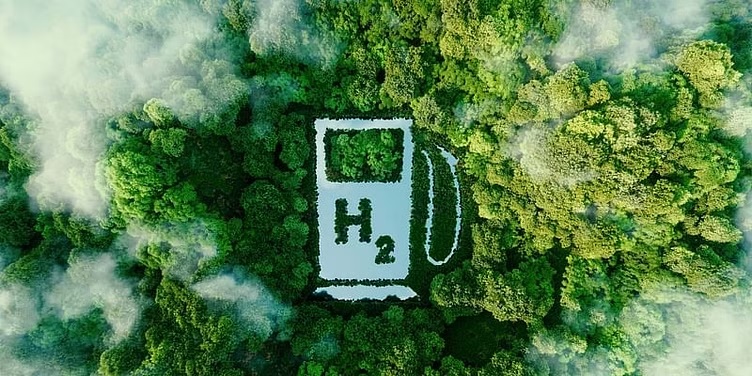
Hydrogen greenwashing stalks EU net zero plans – EQ Mag
European utilities are pushing to build power plants that would burn natural gas now and then be switched to burn clean hydrogen down the road. But the technology they’re depending on wastes energy and opens the door for accusations of greenwashing.
RWE, SSE and Equinor say the swap will be easy once green hydrogen becomes plentiful and cheaper. The concept is so popular that Germany, Europe’s biggest energy user, is counting on the clean fuel to help it achieve 100% renewable-power production by 2035.
A significant obstacle to those plans is hydrogen’s inefficiency. By the time the gas is made, stored and burned to make electricity again, there’s nearly 70% less energy than at the start — and the cost has tripled. Plus, there may not be enough clean tech to produce that hydrogen, leaving an opening for fossil fuels.
“There’s a huge scope for these ‘hydrogen-ready’ claims to be greenwashing if there aren’t conditions set,” said Sarah Brown, an analyst at London-based climate think tank Ember. “Operators or people who are going to build gas plants can just come out and say, ‘Yeah, yeah, yeah, it’ll be hydrogen-ready,’ without any definition of what that means.”
Governments are steering their economies through the worst energy crisis in decades with policies to guarantee domestic supply and double down on low-carbon technologies that help prevent catastrophic climate change. Many are counting on hydrogen to help them wean off polluting sources.
Public funding for the hydrogen sector totals $146 billion worldwide to 2030, according to BloombergNEF. Germany tops the list with $28.6 billion, while the U.K. has committed $1.9 billion.
Britain’s clean-energy strategy unveiled March 30 was low on fresh funding but proposed rules on defining “hydrogen readiness.”
Yet with targets to eliminate grid emissions little more than a decade away, there’s significant risk these natural gas plants won’t transition to cleaner hydrogen fast enough and instead will become hindrances to climate goals or stranded assets.
“We’re looking at this very skeptically and concerned,” said Constantin Zerger, an energy expert for the nonprofit Environmental Action Germany. “Most of the turbines you buy today aren’t even 100% hydrogen-capable yet.”
If such conversions don’t happen, there’s no clear backup plan to cut emissions while keeping the lights on. Europe is falling behind on goals to expand its renewable fleet, with spending on wind farms hitting the lowest level in more than a decade.
Countries have shown during this crisis that they’ll go to great lengths to maintain energy supplies. Come 2035, if plants can burn hydrogen but don’t have enough of it, there’s a clear opening for natural gas.
“What we learned in the last year was when you look at sustainability, affordability and security of supply, when security of supply is in danger, the rest doesn’t matter,” RWE Chief Executive Officer Markus Krebber said.
Germany is preparing tenders for another 25 gigawatts of power generation and would assemble the infrastructure for importing liquefied natural gas to fuel the plants. The government theorizes the sites eventually will run on hydrogen, which only releases water vapor when burned.
Last year, Germany turned to coal, the most-polluting fossil fuel, when Russia cut gas shipments after invading Ukraine. Europe’s biggest economy wants to advance the deadline for closing all coal-fired power plants to 2030.
Green hydrogen’s main advantage is that it’s a way to store electricity produced by wind farms and solar plants for use in the future. Unlike batteries that are only good for a few hours, hydrogen can be kept for months. That would mean Spanish solar farms could produce fuel all summer and then ship it so Germany can burn it in winter.
The U.K. has a goal to have 10 gigawatts of low-carbon hydrogen production capacity by 2030, with at least half coming from renewables and the remainder produced from natural gas with carbon capture. Early demand is set to come from industrial customers.
SSE is working with Equinor on a project in eastern England that would be the first step toward a hydrogen-powered future. The system employs a 35-megawatt electrolyzer to split hydrogen and water. The hydrogen is then stored in an underground salt cavern until it’s needed by a small power plant.
U.K. Energy Secretary Grant Shapps wants to make enough hydrogen by 2030 to power London for a year. But Sopna Sury, RWE’s chief operating officer for hydrogen, said European nations still have work to do.
“The plans are there, but you need regulation and funding support,” Sury said in an interview. “You need to have a clear view that the site where you’re developing such a project can access hydrogen.”
Ultimately, hydrogen’s higher cost could balance out over time. If renewables are abundant, electricity will be cheaper when there’s a lot of wind or sunshine, so that’s a great time to make hydrogen.
In Europe, it likely will be the most economical option for long-term, zero-carbon storage. Places like the U.S., which has abundant natural gas, could use carbon capture to create low-carbon hydrogen or just burn gas directly, but Europe doesn’t have that option.
“In the future with high shares of renewables, we need backup,” said Matthias Deutsch, an analyst at Berlin-based think tank Agora Energiewende. “It’s an expensive option, but it’s the key technology for long-term seasonal storage.”
















